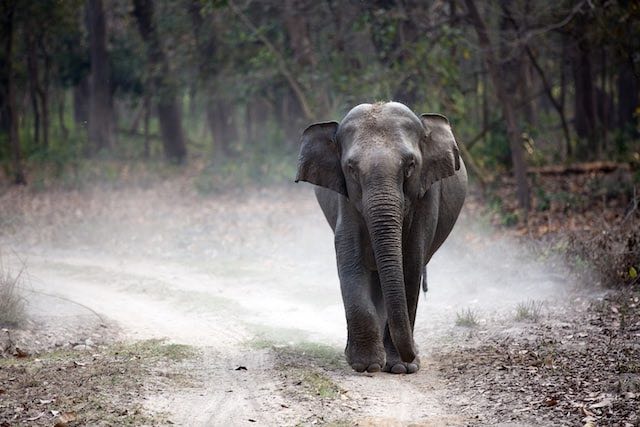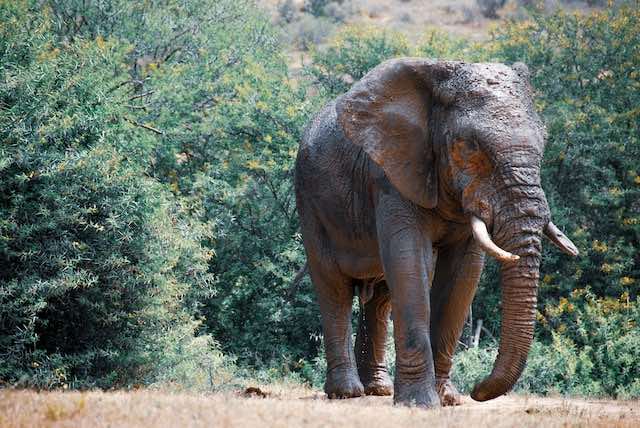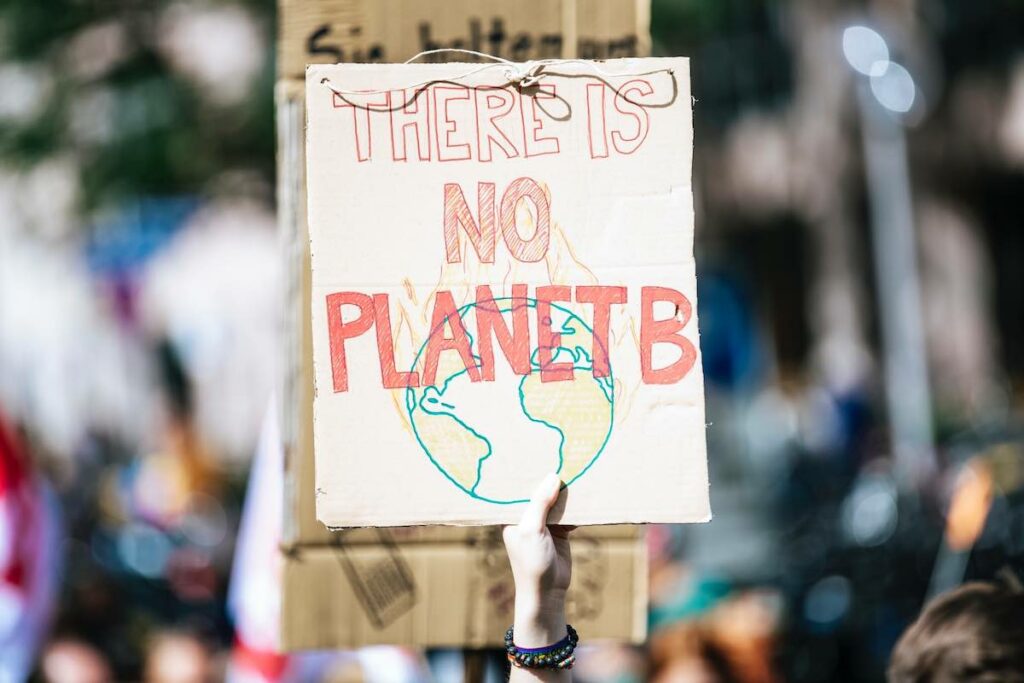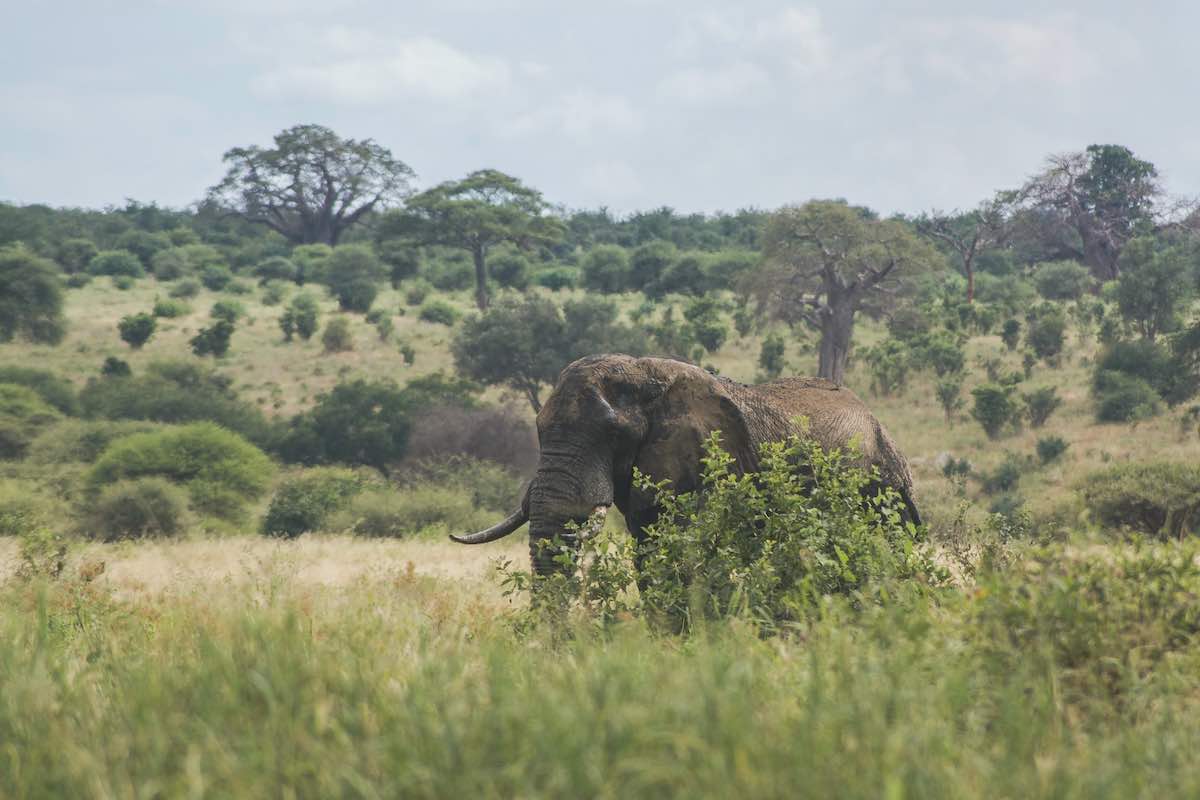Climate change is having a profound and devastating impact on elephant habitats around the globe. Elephants are considered keystone species, meaning that their presence in an ecosystem can determine the overall health of its environment.
As climate change brings about increased temperatures, more frequent and severe weather events, and other changes to the environment, it affects not only direct resources like food and water but also the broader environment in which elephants live and their opportunity to thrive and reproduce.
The most significant disruption caused by climate change is the alteration of elephants’ natural migration patterns, as their traditional food and water sources become harder to find.
With fewer resources available, they are compelled to move into smaller areas where resources are denser — but this is associated with human-elephant conflict as we compete for the same, in some cases, limited resources.
As resources become scarce due to the general impacts of climate change, elephants are forced to compete with other species for food, water, and habitat, leading to increased conflict and harm to elephants.
Changes in temperature and rainfall patterns can also lead to changes in vegetation patterns, affecting the food supplies of elephants and leading to malnutrition and reduced health.
Furthermore, climate change is leading to an increase in the frequency and intensity of extreme weather events, such as heatwaves, droughts, and hurricanes, which can cause significant damage to elephant habitats, leading to further declines in the number of elephants.
Indian Elephants And Climate Change

One real-time example of how climate change impacts the habitat of Asian elephants in India.
In recent years, temperatures across the country have been consistently rising, with some cities experiencing temperatures in excess of 100°F.
This has caused an increase in drought and water scarcity, leading to a sharp decrease in already endangered Asian elephant food sources.
As a result, many endangered Asian elephants have been forced to move from their usual migratory corridors into more heavily populated areas in search of food.
This has invariably caused conflicts with humans trying to protect their property, livelihoods, and their families.
East African Elephants And Climate Change

In East Africa, such as in Kenya, the African elephant is facing a plight due to changes in their habitats caused by drought, flooding, and heat extremes.
African forest elephants require a lot of water to survive and depend on regional rain patterns that are steadily becoming more variable.
There have also been unusually high temperatures, which then exacerbate water availability as it evaporates quickly and leaves less for African elephants to drink.
With the loss of resources comes displacement or migration, disrupting entire families of African elephants who have already faced immense hardship during this time period.
It’s heartbreaking because African forest elephants occur in the African landscape, providing us with untold beauty while they live out their lives in peace.
As the population of African forest elephants dropped, we can all do our part to help protect elephants: from advocating for responsible deforestation policies that can lead to more broad-based species conservation cycle measures to conserving water on a personal level so there is more for all species on earth.
How Do Elephants Adapt To Climate Change?
It’s no secret that elephants are highly adaptive animals. They can quickly and efficiently adapt to changes in their environment such as climate change.
Elephants find food and water sources by migrating long distances; this is one way that they have adapted to the changing climates around them, allowing them to access the resources they need for survival.
In order to be able to survive, elephants must also adapt their behaviors so that they can better cope with the effects of climate change.
One example is that African forest elephant herds often break up during times of droughts or when water is scarce in an area.
This allows each individual elephant to find its own resources without relying on its herd mates, increasing the chances of species survival in areas affected by climate change.

How Can We Save Elephants Habitat From Climate Change?
Elephants are one of the most iconic species in the natural world, and their habitats are under direct threat from climate change.
The changing climate is causing significant harm to elephant habitats, making it increasingly difficult for them to find food, water, and shelter.
To save suitable elephant habitats from the effects of climate change, it is important for the world to take proactive steps.
1. Reduce Greenhouse Gas Emissions
One of the most critical steps in saving elephant habitats from climate change is to reduce greenhouse gas emissions, such as carbon dioxide and CFC.
This can be done by transitioning to clean energy sources such as solar and wind power, reducing deforestation, and promoting energy efficiency.
Additionally, governments, corporations, and individuals can take steps to reduce their carbon footprint by reducing their energy consumption, using public transportation, and eating a more plant-based diet.
2. Protect And Restore Degraded Habitats
Another way to save elephant habitats from climate change is to protect and restore degraded habitats.
This involves planting new trees, protecting wetlands, and restoring degraded lands to their natural state.
This helps to create a more resilient environment that can better withstand the effects of climate change.
3. Support Elephants Conservation Initiatives
It is also important to support conservation initiatives that work to protect elephant habitat loss.
This can involve funding research and monitoring programs, supporting elephant conservation organizations, and advocating for strong conservation policies.
4. Raising Awareness
Finally, educating the public about the importance of elephants and their habitats is a crucial step in saving elephants from the effects of climate change.
By spreading awareness about the threat to elephants and their habitats, we can help to build a groundswell of support for conservation efforts.
Conclusion
The changing climate is having a profound and devastating impact on elephant habitats around the globe.
Increased temperatures, more frequent and severe weather events, and other changes to the environment are causing significant disruption of elephants’ natural migration patterns, leading to conflicts between elephants and humans as we compete for the same limited resources.
To save elephant habitats from climate change, it is essential to reduce greenhouse gas emissions, protect and restore degraded habitats, support conservation initiatives, and raise awareness about the plight of elephants.
By taking these proactive steps, we can help to protect this iconic species and their habitats for generations to come, allowing them to thrive again.
FAQs about Climate Change and Elephant Habitats?
Climate change leads to changes in temperature and rainfall patterns, which affects vegetation and water availability in elephant habitats.
Climate change causes prolonged droughts, increased frequency of wildfires, and changes in vegetation patterns, all of which impact elephant habitats.
Loss of elephant habitats can lead to a decline in the elephant population, loss of biodiversity, and impacts on local communities that rely on elephants for tourism and cultural reasons.
Mitigating climate change by reducing carbon emissions and protecting elephant habitats through conservation efforts can help mitigate the effects of climate change.
